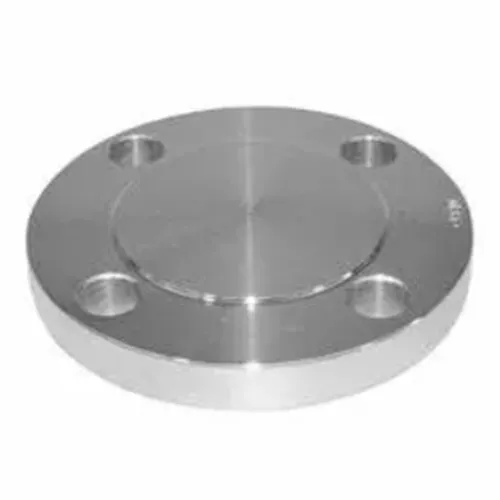-
Cangzhou Yulong Steel Co., Ltd.
-
Phone:
+86 13303177267 -
Email:
admin@ylsteelfittings.com
- English
- Arabic
- Italian
- Spanish
- Portuguese
- German
- kazakh
- Persian
- Greek
- French
- Russian
- Polish
- Thai
- Indonesian
- Vietnamese
- Zulu
- Korean
- Uzbek
- Hindi
- Serbian
- Malay
- Ukrainian
- Gujarati
- Haitian Creole
- hausa
- hawaiian
- Hebrew
- Miao
- Hungarian
- Icelandic
- igbo
- irish
- Japanese
- Javanese
- Kannada
- Khmer
- Rwandese
- Afrikaans
- Albanian
- Amharic
- Armenian
- Azerbaijani
- Basque
- Belarusian
- Bengali
- Bosnian
- Bulgarian
- Catalan
- Cebuano
- China
- China (Taiwan)
- Corsican
- Croatian
- Czech
- Danish
- Esperanto
- Estonian
- Finnish
- Frisian
- Galician
- Georgian
- Kurdish
- Kyrgyz
- Lao
- Latin
- Latvian
- Lithuanian
- Luxembourgish
- Macedonian
- Malgashi
- Malayalam
- Maltese
- Maori
- Marathi
- Mongolian
- Myanmar
- Nepali
- Norwegian
- Norwegian
- Occitan
- Pashto
- Dutch
- Punjabi
- Romanian
- Samoan
- Scottish Gaelic
- Sesotho
- Shona
- Sindhi
- Sinhala
- Slovak
- Slovenian
- Somali
- Sundanese
- Swahili
- Swedish
- Tagalog
- Tajik
- Tamil
- Tatar
- Telugu
- Turkish
- Turkmen
- Urdu
- Uighur
- Welsh
- Bantu
- Yiddish
- Yoruba

Aug . 11, 2024 20:34 Back to list
Guidelines for Properly Connecting Galvanized Pipes in Plumbing Installations and Repairs
Connecting Galvanized Pipe A Comprehensive Guide
Galvanized pipes are widely used in plumbing and construction due to their durability and resistance to corrosion. Typically made from steel and coated with zinc, these pipes have been a choice for various applications, ranging from residential plumbing to industrial systems. Connecting galvanized pipes correctly is essential for ensuring the longevity of the system and preventing leaks. This article explores techniques and considerations for effectively connecting galvanized pipes.
Understanding Galvanized Pipes
Before delving into the connection methods, it’s important to understand the properties of galvanized pipes. The galvanization process involves coating steel pipes with a layer of zinc, which protects them from rust and corrosion. This makes galvanized pipes ideal for outdoor and underground applications where exposure to moisture is prevalent. However, as with any material, proper care and connection methods are necessary to maintain their integrity.
Tools and Materials Needed
To connect galvanized pipes, specific tools and materials are required
1. Pipe Wrenches These are essential for tightening and loosening fittings. 2. Cutting Tool A pipe cutter or hacksaw is necessary for cutting pipes to the desired length. 3. Thread Sealant Teflon tape or liquid thread sealant ensures leak-proof connections. 4. Fittings Depending on the application, you may need elbows, tees, or couplings. 5. Measuring Tape Accurate measurements are crucial for cutting and fitting pipes correctly.
Methods for Connecting Galvanized Pipes
1. Threaded Connections The most common method of connecting galvanized pipes is through threaded connections. To create threaded ends on pipes, a die is used. Once the threads are created, a male fitting can be screwed onto the female fitting or another pipe end. It is important to wrap Teflon tape around the threads to prevent leaks and ensure a secure seal.
2. Couplings For connecting two sections of pipe, couplings are a suitable choice. They are simply cylindrical fittings that can connect two pipes of the same diameter. The ends of the pipes are inserted into the coupling and then secured with pipe wrenches. A thread sealant should be used for added protection against leaks.
connecting galvanized pipe

3. Elbows and Tees When changing the direction of the pipe, elbows and tees can be utilized. Elbows are used for a 90-degree turn, while tees allow for branching off to another pipe. Both require thread sealant and should be tightened properly to ensure no gaps are present.
4. Cap and Plug Connections For ending a pipeline or sealing a section, caps and plugs can be used. Caps are placed on the end of a pipe, while plugs are inserted into the opening. Similar to other connections, thread sealant will enhance the seal and prevent future leaks.
Considerations When Connecting Galvanized Pipes
1. Corrosion Risks While galvanized pipes are resistant to rust, over time, corrosion can occur, especially inside the pipes. Using proper fittings and sealants can help mitigate rust formation.
2. Expansion and Contraction Temperature changes can cause pipes to expand and contract. Ensuring that connections allow for movement can help prevent stress on the joints.
3. Compatibility with Other Materials When connecting galvanized pipes to other types of pipes (like copper or PVC), you should use appropriate transition fittings to avoid galvanic corrosion.
4. Maintenance Regular inspections can help identify any leaks or corrosion early, allowing for timely repairs.
Conclusion
Connecting galvanized pipes is a vital skill for anyone engaged in plumbing or construction. With the right tools and techniques, you can create a durable, leak-free piping system. Always prioritize proper sealing and connection methods to maximize the lifespan of your galvanized pipes, ensuring they serve their purpose effectively for years to come.
Latest news
-
ANSI 150P SS304 SO FLANGE
NewsFeb.14,2025
-
ASTM A333GR6 STEEL PIPE
NewsJan.20,2025
-
ANSI B16.5 WELDING NECK FLANGE
NewsJan.15,2026
-
ANSI B16.5 SLIP-ON FLANGE
NewsApr.19,2024
-
SABS 1123 FLANGE
NewsJan.15,2025
-
DIN86044 PLATE FLANGE
NewsApr.19,2024
-
DIN2527 BLIND FLANGE
NewsApr.12,2024
-
JIS B2311 Butt-Welding Fittings LR/SR 45°/90° /180°Seamless/Weld
NewsApr.23,2024











